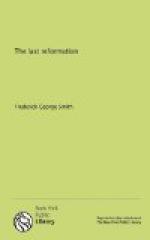The limits and object of the present work preclude an exhaustive treatment of prophecy in general. Our immediate purpose is to set forth particularly those prophecies of the divine Word which clearly portray and outline the character of a world-wide religious movement in the last days. To do this effectually, however, we must briefly consider those prophecies which describe the principal ecclesiastical events in history which form the basis of, or lead up to, the Last Reformation. The subject as outlined in the prophecies and as based on the facts of history, naturally divides into four parts, or epochs, as follows:
I The Apostolic Period
II The Medieval Period
III Era of Modern Sects
IV The Last Reformation
For the sake of brevity, we shall, as far as possible, exclude from our present inquiry those prophecies pertaining to civil and political affairs, retaining only such as have an important bearing on the church subject.
CHAPTER XI
THE APOSTOLIC PERIOD
[Sidenote: The star-crowned woman]
The twelfth chapter of Revelation introduces an important line of prophetic truth respecting the church, beginning with these words: “And there appeared a great wonder in heaven; a woman clothed with the sun, and the moon under her feet, and upon her head a crown of twelve stars: and she being with child cried, travailing in birth, and pained to be delivered.” “And she brought forth a man child, who was to rule all nations with a rod of iron: and her child was caught up unto God, and to his throne. And the woman fled into the wilderness, where she hath a place prepared of God, that they should feed her there a thousand two hundred and threescore days” (verses 1, 2, 5, 6).
As we have already stated and as will be made very clear hereafter, symbols drawn from human life are used to represent ecclesiastical affairs. Therefore in the symbol now before us we have a representation of the church, and from the general description given we infer that it must be the pure church of God, for the brightest luminaries of heaven are gathered around her and no evil thing is said concerning her. That this woman is the special object of God’s care and concern is further shown by the fact that when she fled into the wilderness, she had “a place prepared of God, that they should feed her there.” That this interpretation of the woman is correct is also shown by other texts in Revelation.
In chapter 21:9 an angel talking with John said, “Come hither, I will shew thee the bride, the Lamb’s wife.” And again, in chapter 19:7, where the church is undoubtedly referred to, a great multitude is represented as saying, “Let us be glad and rejoice, and give honor to him: for the marriage of the Lamb is come, and his wife hath made herself ready.” In the seventeenth chapter the church apostate is without doubt described by the symbol of a vile, polluted harlot.




